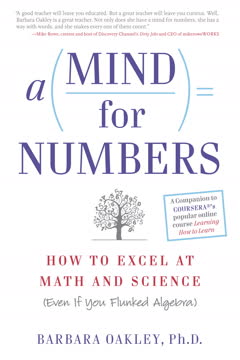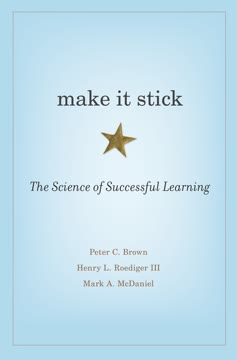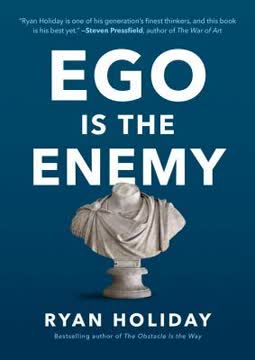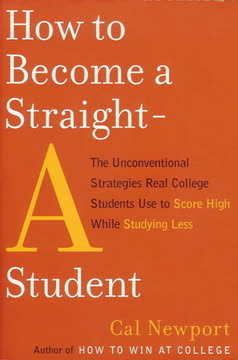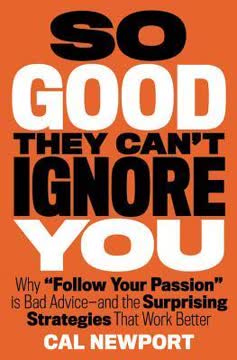つの重要なポイント
1. 簡単な5分間の毎日のシステムで時間管理をマスターする
日中に新しいタスクや課題をリストに書き留め、翌朝にそれらをカレンダーに移し、数分間かけて一日の計画を立てる。
5分間システム。 このアプローチはカレンダーと毎日のリストを使用します。毎朝、リストからカレンダーに項目を移し、現実的に一日の計画を立てるために数分を費やします。このシステムは以下の点で役立ちます:
- すべてのタスクと締め切りを一か所で管理する
- 自由時間を過大評価しない
- コミットメントの全体像を明確に把握する
毎日わずか5分をスケジュールの整理に充てることで、ストレスを大幅に軽減し、生産性を向上させることができます。鍵は一貫性と、システムを個人のニーズやライフスタイルに適応させることです。
2. ターゲットを絞った戦略と自己認識で先延ばしを克服する
先延ばし対策プラン#1: 作業進捗ジャーナルをつける
先延ばしを効果的に克服する。 タスクを遅らせる衝動を克服するために、以下の戦略を実行します:
- 作業進捗ジャーナルをつけて自己責任を持つ
- 脳に適切な栄養と水分を供給する
- 難しいタスクをイベントにしてモチベーションを高める
- 作業ルーチンを構築して安定した進捗を維持する
- 事前に困難な日を選んでその影響を最小限に抑える
先延ばしの衝動が正常であることを認識することで、それを完全に排除しようとするのではなく、それを回避するための戦略を開発することに集中できます。鍵は、自分に合った方法を見つけ、それを一貫して適用することです。
3. 最適な学習環境とセッションの長さで最高のパフォーマンスを発揮する
キャンパス内に点在する孤立した学習スポットをいくつか見つけ、学習時にこれらの隠れた場所をローテーションする。
理想的な学習条件を作り出す。 生産性と集中力を最大化するために:
- 静かで孤立した場所を選んで学習する
- 刺激を維持するために異なる学習スポットをローテーションする
- 学習セッションを約1時間に制限し、短い休憩を挟む
- 最もエネルギーが高い時間帯に最も要求の高い作業をスケジュールする
学習する時間、場所、長さを慎重に選ぶことで、集中力と資料の保持力を大幅に向上させることができます。最適な条件は人それぞれ異なるため、何が最も効果的かを試してみてください。
4. 効率的に重要な概念を捉えるための戦略的なノート取り
非技術的なコースでは、質問/証拠/結論の形式で大きなアイデアを捉える。
効果的なノート取り戦略を開発する。 コースの種類に基づいてアプローチを調整します:
非技術的なコースの場合:
- 質問/証拠/結論の形式を使用する
- すべての詳細ではなく大きなアイデアを捉えることに焦点を当てる
- 重要なポイントを強調するためにフォーマットを活用する
技術的なコースの場合:
- できるだけ多くのサンプル問題と解答を記録する
- 中間ステップよりも問題文と解答を優先する
- 混乱した場合は質問し、後で見直すために不明確な部分をマークする
これらの戦略を採用することで、後での学習時間を大幅に削減できる、より有用で整理されたノートを作成することができます。
5. 重要性に基づいて課題と読書を優先する
大学でのすべての読書をこなすのは贅沢であり、特に課外活動に参加している場合は難しい。
戦略的に作業量を管理する。 課題の量を効率的に処理するために:
- 核心情報を提供する「優先ソース」を特定し、優先する
- 補足読書の重要性階層を使用する:
- 論を展開する読書
- 出来事や人物を記述する読書
- 背景情報のみを提供する読書
- 優先読書課題については、質問/証拠/結論の形式でスマートなノートを取る
- 問題セットについては、一貫して作業し、許可されている場合はクラスメートと協力する
作業を優先し、最も重要な資料に焦点を当てることで、社会生活や課外活動を犠牲にすることなく、良い成績を維持することができます。
6. クイズとリコール法を使用して試験に備える
目を閉じてゼロから論を述べることができるか、白紙の紙を見つめて間違いなく解答を再現できるなら、その概念を完全に身につけたことになる。
クイズとリコール法をマスターする。 この効率的な学習技術は以下を含みます:
- ノートや学習資料から練習クイズを作成する
- 各質問に口頭または書面で答えようとする
- 答えを見直し、修正する
- 問題のあった部分に焦点を当ててプロセスを繰り返す
技術的なコースの場合:
- サンプル問題を解き、概念を口頭で説明する
- 利用可能な場合は模擬試験を使用する
この方法は資料に積極的に取り組むことを保証し、より多くの注意が必要な部分を特定するのに役立ちます。受動的な復習よりも効果的で、概念をより深く内面化するのに役立ちます。
7. 管理可能なステップに分けて目立つ論文を作成する
学生からよく聞く不満は、すべての作業を終えるのに十分な時間がないということです。
論文作成を体系的にアプローチする。 プロセスを以下のステップに分けます:
- 課題の範囲内で興味深いトピックを選ぶ
- 初期調査を通じてターゲットとなる論旨を開発する
- 教授から論旨についてフィードバックを求める
- 徹底的かつ組織的な調査を行う
- 論旨の詳細なアウトラインを作成する
- ピアや教授からアウトラインについてフィードバックを得る
- 論文を書き、論旨を明確に伝えることに焦点を当てる
- 作品を慎重に編集する
これらの要素を分けることで、論文作成プロセスを圧倒されることなく、より効率的に進めることができます。このアプローチにより、各側面に個別に集中でき、最終的な成果物の質が向上します。
8. 完璧にこだわらずに効果的に論文を編集する
論文を永遠に編集し続けても満足することはないかもしれません。だからこそ、印刷して提出するタイミングを知ることが重要です。
3回の編集システムを実施する。 論文を過度に編集せずに効果的に仕上げるために:
-
論旨調整パス:
- 論旨の提示と構造に焦点を当てる
- 明確さと流れを改善するために大幅な編集を行う
-
音読パス:
- 論文を印刷して音読する
- 文法の誤りや不自然な表現をマークする
- マークに基づいて修正を行う
-
サニティパス:
- 印刷したコピーを素早く見直し、残っている誤りを確認する
- この最終読み直しで作品に対する締めくくりを行う
このシステムは、徹底的な編集と効率的な時間の使い方をバランスさせ、細部にこだわりすぎずに論文を仕上げることを保証します。
最終更新日:
FAQ
What's "How to Become a Straight-A Student" about?
- Author and Focus: Written by Cal Newport, the book provides unconventional strategies used by real college students to achieve high grades while studying less.
- Research-Based Advice: The advice is based on interviews with top-scoring undergraduates from prestigious universities, focusing on efficient study habits rather than excessive study hours.
- Practical Techniques: It offers practical techniques for time management, exam preparation, and paper writing, aiming to help students balance academics with social life.
- Target Audience: The book is intended for college students looking to improve their grades without sacrificing their well-being or social activities.
Why should I read "How to Become a Straight-A Student"?
- Efficiency Over Effort: The book emphasizes studying smarter, not harder, which can save time and reduce stress.
- Real-World Examples: It includes strategies from successful students, making the advice relatable and applicable to real college scenarios.
- Comprehensive Approach: Covers various aspects of college life, including time management, exam preparation, and paper writing, providing a holistic approach to academic success.
- Balance and Well-being: Encourages maintaining a balanced lifestyle, ensuring students can enjoy college life while excelling academically.
What are the key takeaways of "How to Become a Straight-A Student"?
- Time Management: Implement a simple, five-minute daily planning system to manage tasks and deadlines effectively.
- Avoid Procrastination: Use specific strategies to combat procrastination, such as keeping a work progress journal and creating routines.
- Study Techniques: Focus on high-intensity, short study sessions rather than long, low-intensity marathons to maximize learning.
- Paper Writing: Break down the paper-writing process into manageable steps, from topic selection to final editing, to reduce stress and improve quality.
What are the best quotes from "How to Become a Straight-A Student" and what do they mean?
- "Efficiency. The simple truth is that the brute force techniques used by most students are incredibly inefficient." This quote highlights the book's core message that smarter study techniques can lead to better results with less effort.
- "Pseudo-work features a very low intensity of focus. Therefore, to accomplish something by pseudo-working, you need to spend a lot of time." It emphasizes the importance of focused, high-intensity study sessions over long, unfocused ones.
- "A little organization goes a hell of a long way." This underscores the book's advocacy for simple, effective time management strategies to reduce stress and improve academic performance.
- "The key to improving your grades without becoming a grind cannot be found in any single study habit." It suggests that success comes from a combination of strategies tailored to individual needs and circumstances.
How does Cal Newport suggest managing time in "How to Become a Straight-A Student"?
- Daily Planning: Spend five minutes each morning updating your calendar and planning your day, focusing on realistic time frames for tasks.
- Task Prioritization: Label tasks with specific time slots to avoid overestimating free time and ensure all obligations are met.
- Flexibility: Allow for adjustments throughout the day to accommodate unexpected events while maintaining productivity.
- Minimal Effort: The system is designed to be lightweight and easy to restart after periods of neglect, making it sustainable for busy students.
What strategies does Cal Newport recommend for avoiding procrastination in "How to Become a Straight-A Student"?
- Work Progress Journal: Keep a daily record of tasks and accomplishments to hold yourself accountable and reduce procrastination.
- Energy Management: Maintain high energy levels by staying hydrated, monitoring caffeine intake, and eating healthy snacks.
- Task Routines: Establish consistent times for specific tasks each week to build productive habits and reduce decision fatigue.
- Hard Days Planning: Schedule intense workdays in advance to manage workload effectively and prevent last-minute stress.
What study techniques are highlighted in "How to Become a Straight-A Student"?
- Quiz-and-Recall Method: Actively recall and articulate concepts in your own words to reinforce learning and improve retention.
- Focused Study Sessions: Limit study periods to one hour with regular breaks to maintain high intensity and avoid fatigue.
- Isolation for Concentration: Choose isolated study spots to minimize distractions and enhance focus during study sessions.
- Efficient Note-Taking: Use a question/evidence/conclusion format for nontechnical courses and prioritize sample problems in technical courses.
How does Cal Newport suggest handling reading assignments in "How to Become a Straight-A Student"?
- Selective Reading: Focus on favored sources and use an importance hierarchy to determine which supplemental readings to skim or skip.
- Efficient Note-Taking: Take notes in a question/evidence/conclusion format to capture big ideas without excessive detail.
- Constant Work: Spread reading assignments over several days to avoid last-minute cramming and improve comprehension.
- Group Work: Collaborate with classmates on problem sets to enhance understanding and reduce individual workload.
What is the "quiz-and-recall" method in "How to Become a Straight-A Student"?
- Active Recall: After reviewing material, try to explain it unaided in your own words to ensure deep understanding and retention.
- Practice Quizzes: Create quizzes from your notes and attempt to answer them without looking, focusing on areas of difficulty.
- Iterative Process: Repeat the quiz-and-recall process until you can answer all questions confidently, minimizing wasted study time.
- Efficiency: This method targets weak areas and reinforces learning, making it more effective than passive review techniques.
How does Cal Newport recommend writing papers in "How to Become a Straight-A Student"?
- Separate Components: Break down the writing process into distinct steps: topic selection, thesis development, research, and writing.
- Detailed Outlines: Create a topic-level outline with supporting quotes to guide writing and ensure a coherent argument.
- Consult Experts: Seek feedback from professors and peers on your outline to refine your argument before writing.
- Efficient Editing: Use a three-pass editing process to polish your paper without fixating on endless revisions.
What is the importance of "academic disaster insurance" in "How to Become a Straight-A Student"?
- Eliminate Uncertainty: Address unclear topics as they arise to prevent gaps in understanding that could lead to exam surprises.
- Proactive Approach: Use class time, office hours, and peer discussions to clarify confusing concepts before exams.
- Minimize Last-Minute Stress: By resolving uncertainties early, you reduce the need for extensive last-minute studying.
- Confidence Boost: Enter exams with a comprehensive understanding of all topics, increasing confidence and performance.
How does "How to Become a Straight-A Student" suggest balancing academics and social life?
- Efficient Study Habits: Implement strategies that reduce study time, freeing up hours for social activities and relaxation.
- Prioritize Well-being: Emphasize the importance of sleep, exercise, and social interactions to maintain mental and physical health.
- Flexible Scheduling: Use a dynamic time management system to accommodate both academic and social commitments.
- Holistic Approach: Recognize that a balanced lifestyle contributes to academic success and overall happiness, as advocated by the book.
レビュー
本書『How to Become a Straight-A Student』は賛否両論の評価を受けている。多くの人々は、時間管理、ノート取り、試験準備に関する実践的なアドバイスを称賛している。読者は成功した学生たちの実例を評価し、これらの戦略が学業以外にも応用できると感じている。一方で、一部の人々は本書が時代遅れであると批判し、技術的な科目に十分に対応していないと指摘している。多くの人々が勉強習慣や成績向上に役立つと感じた一方で、他の人々はアドバイスが常識的であるか、普遍的に適用できないと感じた。総じて、本書は学業成績を向上させたい学生にとって有益である可能性があると見なされている。
Similar Books

